Fancy inhabiting your very own Bridgerton drama? Henrietta Street in Dublin 1 is of the same vintage and tracks the city’s history from its Regency highs to the beal bocht conditions of tenement Dublin in the 1911 census, when 835 people were crowded into 15 of the properties.
At number 7, members of 19 families were in residence. Among the 104 people sharing the house there were charwomen, domestic servants, labourers, porters, messengers, painters, carpenters, pensioners ,a postman, a tailor, and many schoolchildren. Out the back were a stable and a piggery.
As a barrister who had studied at King’s Inns, Fergus Ryan inhabited a different era again, and had traversed the cobbles of Henrietta Street many, many times. “I had sat in rooms and libraries there and as part of the training had taken part in what’s called dinings, meet-and-eat events, in the dining hall.”
A much-storied street, its perfectly preserved Georgian facades and cobbles have formed a backdrop to several period TV series including Penny Dreadful, Inspector George Gently and Foyle’s War. Films shot there include Albert Nobbs, starring Glenn Close.
Construction started on the street in the 1720s on lands bought by the Gardiner family. Back then it was popularly referred to as Primate’s Hill, as one of the houses was owned by the Bishop of Armagh. It was demolished to make way for the law library of King’s Inns.
It is Dublin’s oldest Georgian street, and its mansions were once home to the wealthiest. By the 19th century these had become tenements with up to 100 people living in some of the buildings – including the refurbished number 14, now a tenement museum. Before it was rehabilitated it formed a backdrop to the 1980s TV series Strumpet City.
Ryan bought number 7 in 2018. Scenes from the 1983 film Educating Rita were shot here and in the 2016 film I.T. the former Bond Pearse Brosnan careered up its impressive Regency stairs.
But before he joined the Bar, Ryan had studied architecture and had always loved Georgian buildings.
“I fell in love with the house,” the junior counsel says simply, explaining that it was built by Nathaniel Clements, a politician and developer who was a protégé of Luke Gardiner. “He was then one of the wealthiest men in the city when it was the best address in the capital. He originally built number 8, and then constructed number 7 and moved into it.”
More recently it was one of three houses, numbers 6, 7 and 8, owned by architect and conservationist Uinseann MacEoin, who let them out as studio spaces to artists.
Studios
Ryan bought it from him in February 2018, paying €845,000 for it according to the Property Price Register.
Painters Geraldine O’Neill and Mick O’Dea had studios here. In the drawing room, one of two stellar interconnecting rooms on the first floor, a large canvas by O’Neill showing her on the back stairs, sits above the fireplace, itself a period piece that is Adams in style but Ryan can’t say for sure whether it is an actual Adams.
“I bought it because I was looking for something. Love is blind. That was it. I thought I’d do it up one floor at a time.”
And that’s just what he did. The four-storey over basement house extends to about 790sq m (8,500sq ft).
“The layout of the rooms means it is very usable. The proportions and detailing remained, although there had been many interventions that were inappropriate,” he says.
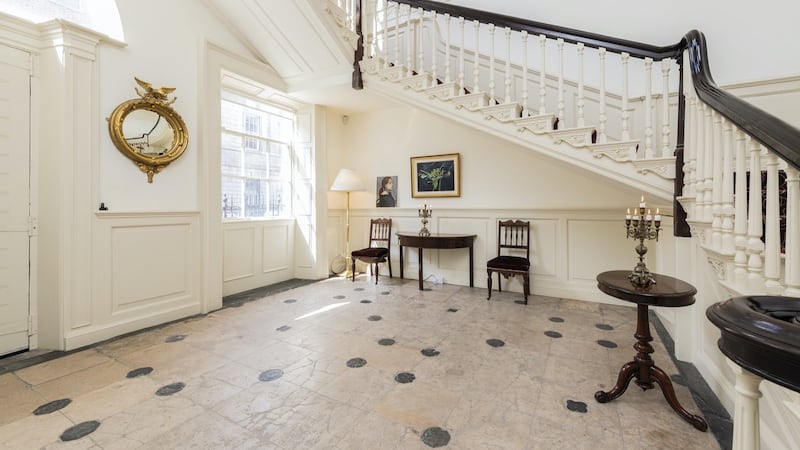
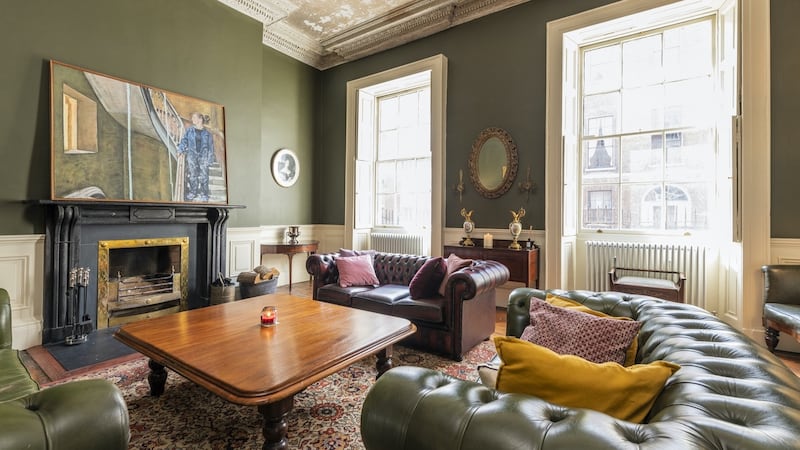
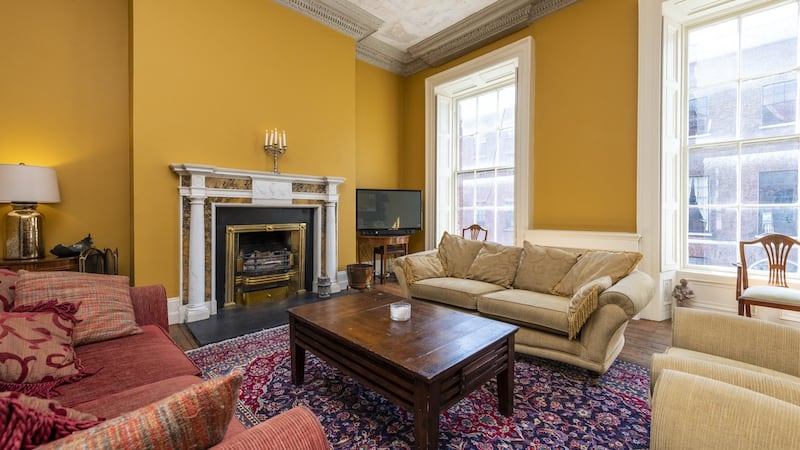
He removed the plasterboard partitions to reveal the original walls and has left the ceilings and tracts of the interior walls in original condition so you can see the layers of paint in a visual history of the house.
He replaced the electric heating with gas-fired radiators throughout. Despite the single-glazed windows, the upper floors are toasty and warm.
He installed bathrooms in a brick return that was added about 100 years ago, while an earlier return is home to a bar on one level and offices, including Ryan’s.
French stone
The home is now very tastefully underdone. The wide plank pitch pine boards remain underfoot, while some walls and ceilings are bare – left to show the property’s decorative past.
The hall, of French stone with Kilkenny limestone insets, has two main rooms connected by a single door at entrance level. The front is painted Invisible Green, a colour made popular by gardener Humphrey Repton for exterior fencing and railing so it would blend into background vegetation, while the dining room to the back is Copper Beech, a deep shade of brown – inspired, its makers Paint and Paper Library say, by Italian majolica. Access to the garden is at this level.
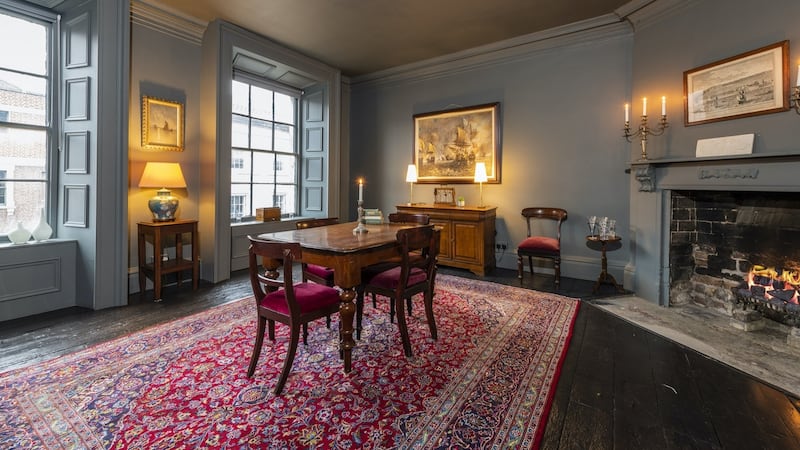
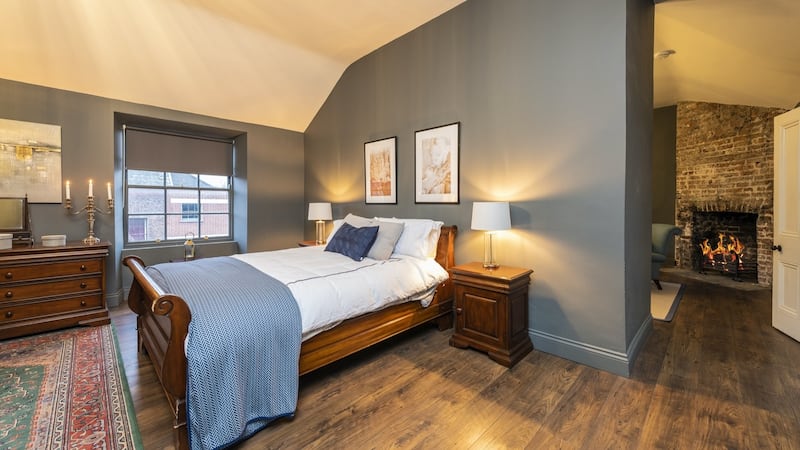
Ryan’s primary accommodation is on the second floor and includes a dressing room and en suite bathroom. There are two more rooms to the front including a living room. On the third floor lit by a glass atrium there’s a small kitchen and three more possible bedrooms as well as a living room.
The main kitchen is at basement level, along with a living room and separate large wine cellar.
The property comes to market seeking €3 million through agents Move Home and includes a north-facing garden of about 263sq m (2,831sq ft) with a tunnel below it leading to the site at the rear.
This mews site, with separate vehicular entrance, extends to about 350sq m (3,767sq ft): Ryan bought it after he bought the house.
Next door the rear of number 8a Henrietta Lane, at 192sq m (2,067sq ft), was purchased for €360,000 in 2021. Its new owner has been granted planning to build a four-storey block comprising seven apartments: two two-beds, one two-bed duplex, and four studios.









